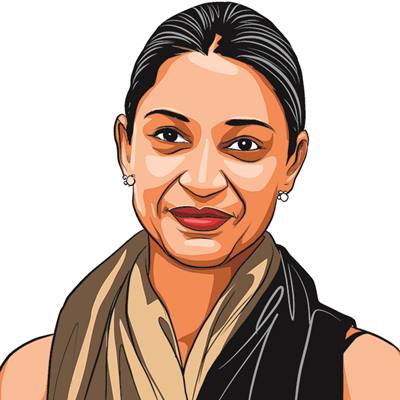Opinion Yoga is as yoga does
The American yoga community faces urgent questions about authenticity and ownership,philosophy and propriety
The American yoga community faces urgent questions about authenticity and ownership,philosophy and propriety
Shavasana never looked so complicated especially in the US. About 14.3 million Americans practise yoga today,and about $6 billion was spent on yoga products in 2008,according to the American Yoga Journal but recently,the practise has been embroiled in much controversy. Accusations of financial misdeeds,sexual misconduct and ownership issues of asanas have roiled the community. India,as yogas civilisational home,will eventually have to grapple with these concerns about its philosophy,patents,and even its guru-shishya parampara model.
The first whiff of scandal erupted earlier this year,when John Friend,founder of Anusara Yoga,a hatha yoga-based practice which counts as its central tenet a feel good factor,was accused of widespread womanising and inappropriate behaviour. Friend,the subject of a hagiographic profile in The New York Times as recently as 2010,was forced to resign and has skulked off to introspect. Such transgressions are not new even in the 60s and 70s,when the Beatles and others made yoga popular in the US,Maharishi Mahesh Yogi had been accused of impropriety (never proven) by Mia Farrow. Swami Satchidananda,founder of Integral Yoga,had been accused of sexual abuse and of preaching poverty while luxuriating in a Rolls Royce.
But far more significant is the battle over Ashtanga yoga,a rigorous practice that originated in Mysore that is highly popular in the US. Ashtanga was made famous by K. Pattabhi Jois,who died in 2009. Jois,a student of the great yogi T. Krishnamacharya (who also taught B. K. S. Iyengar),perfected a sequence of asanas,eventually collated into six series,each more arduous than the next. Fans include Madonna,Sting,and hordes of type-A personalities attracted to its structure and difficulty. In a recent Vanity Fair article,a proponent of Ashtanga describes it as the Yoga of no,in contrast to Anusara,known as the Yoga of yes. Jois grandson Sharath succeeded him at the Shri K. Pattabhi Jois Ashtanga Yoga Institute in Mysore. Having mastered the sixth series,Sharath is said to be the foremost practitioner of Ashtanga. He and his mother have partnered with 44-year-old Sonia Tudor Jones,wife of billionaire hedge fund investor,Paul Tudor Jones II,to create Jois Yoga,which wants to bring yoga to the underprivileged across the world,apart from creating beautiful yoga shalas. Oh,and theres a line of clothing too.
While all this sounds like the corporatisation of Ashtanga,what really worries veteran practitioners is how Jois Yoga will carry forward its traditions. There are murmurs of discontent about changes in teacher authorisation rules,with Sharath instituting a requirement that those who wish to teach Ashtanga must learn under him in Mysore,and that teaching methods may not be altered. The Mysore institute now has an official list of teachers,effectively serving as a diktat against those who vary from prescribed sequences.
All this begs the question of authenticity and ownership can certain strands of yoga be owned by an individual or group? Bikram Chowdhary,founder of the hot yoga school known as Bikram Yoga,copyrighted a sequence of poses in the US and licenses these to teachers. By 2008,the US Patent and Trademark Office had issued 150 yoga-related copyrights and 2,315 yoga trademarks. But can asanas really be owned from a legal perspective? Indias Patent Office is documenting all known asanas as part of the Traditional Knowledge Digital Library,to avoid attempts like the patenting of neem and turmeric.
These debates raise a philosophical question,of whether yoga is merely a physical regimen or a quest towards spiritual enlightenment. For those who believe the former,patenting poses may seem like a logical step in developing an exercise method a quintessentially American perspective.
As yogas global influence spreads,and as it becomes big business,India should also contemplate its future. What is needed is a proactive institution that furthers yoga studies,conducts research,collaborates with the medical community,and sets norms and guidelines. Lets say Om to that.
The writer is a Mumbai-based journalist


